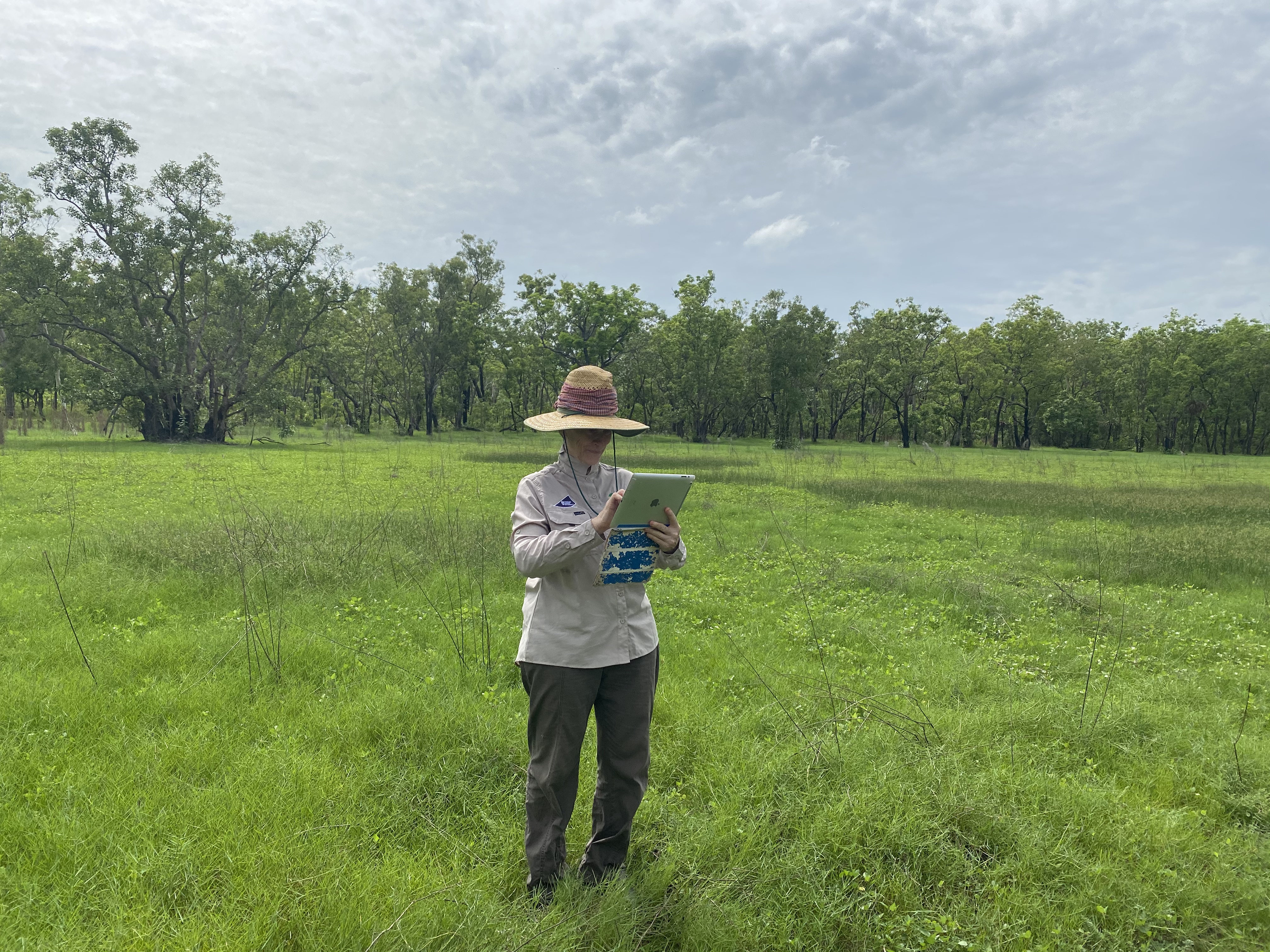A four-year, multi-disciplinary project under the CRC’s Research Program 1 will help ‘prepare the ground’ for commercialising Australian native rice, at same time creating new opportunities for indigenous enterprise.
Australian wild rice grows abundantly in natural wetlands in Northern Australia but is not currently marketed at commercial scale.
A high-nutrient, culturally identified food, our native rice has an array of potential high-value markets in tourism, gourmet foods, restaurants and value-added processed products. To date, however, challenging, non-cost-effective harvesting methods, limited cultivation and a lack of specialised processing facilities have kept it largely off the menu.
This is about to change, if a new multi-disciplinary project involving researchers, industry and Indigenous communities across northern Australia – and from as far away as Manitoba, Canada – realises its vision of commercialising this significant native crop for the benefit of the traditional landowners.
A three-plus-year, multi-stage CRC-led collaboration, the ‘Commercialisation of native rice for Indigenous enterprise development: Agronomy and value-adding’ project (otherwise known as the ‘Commercialising native wild rice’ project) will lay the foundation for a native rice industry in northern Australia and evaluate the feasibility of such an industry: the most effective production systems, locations and methods; customised processing technologies; value-adding opportunities and the like – in short, what’s needed to deliver on the project’s overarching objectives.
The project will explore ways to enable the cost-effective commercialisation of this tasty, nutritious, culturally significant and potentially lucrative crop.
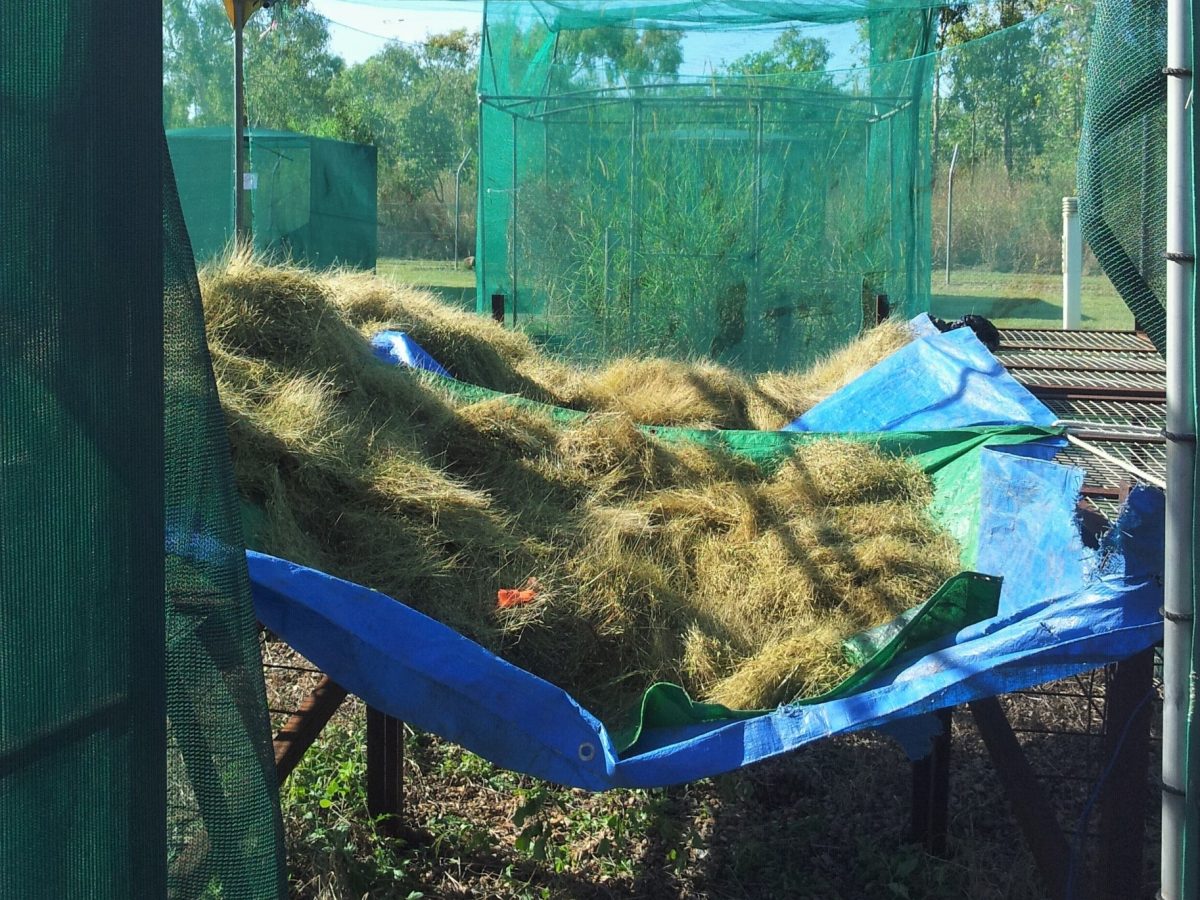
Native wild rice collected by CDU researchers in April 2016. Credit: Penny Wurm, Charles Darwin University
Challenges and opportunities
In response to increasing demand globally for high-value ‘niche’ foods, Australia has an unprecedented opportunity to produce culturally significant, distinctively native foods such as native Australian rice in commercial quantities – and Northern Australia has numerous natural advantages that could help it meet this demand.
The region faces a number of challenges, however, when it comes to commercialising Indigenous crops such as native rice.
Australian native rice grows in natural wetlands throughout the Northern Territory and Queensland. Currently, it is wild-harvested in minute quantities from watery, croc-infested environs via airboat – an intensive harvesting method that is not economical at scale.
To date, it has not been cultivated at commercial scale; hence, there’s little information on best management practices, from selecting optimal sites, soil, irrigation and cultivation systems to determining the most desirable strains.
Moreover, due to its wild traits, native rice has special milling and processing requirements, which currently act as barriers to scaling up. An almost-complete lack of specialised harvest, milling and processing technology for native grains.
Before we can harness the commercial potential of nutritious, delicious Australian native rice, we need to conduct a thorough investigation of best management practices for commercial-scale cultivation and processing of native rice species in Northern Australian environments. This includes assessing agronomic factors such as planting time, water use and nutrients, and cultivation in protected environments.
Finding new ways to harvest native rice under commercial cultivation and increasing the efficiency of native rice processing by developing or customising threshing and milling equipment are other important keys to commercialising this potentially high-value, in-demand crop.
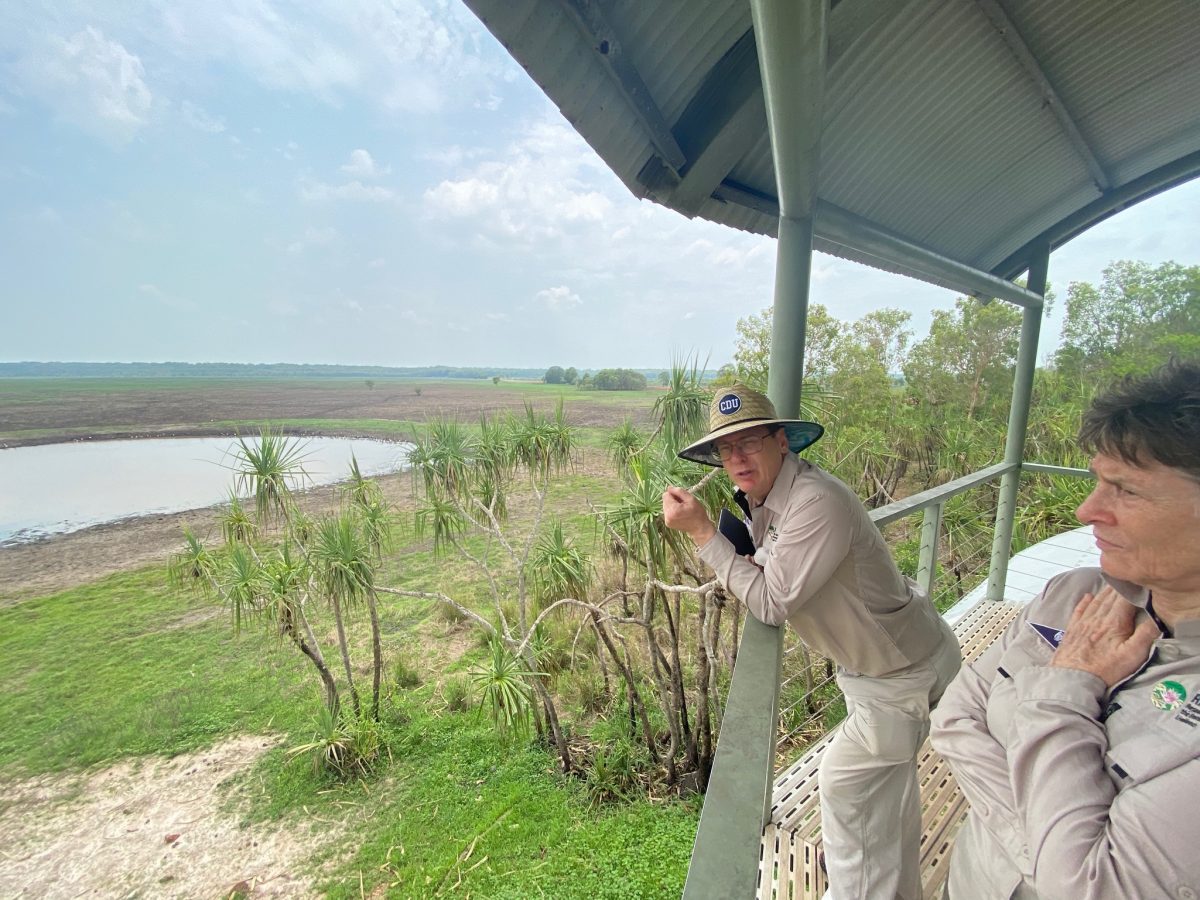
Dr Penny Wurm and Dr Sean Bellairs look out over the Northern Territory wetlands: the region is ideal for growing high-value native wild rice crops. Credit: Future Food Systems CRC
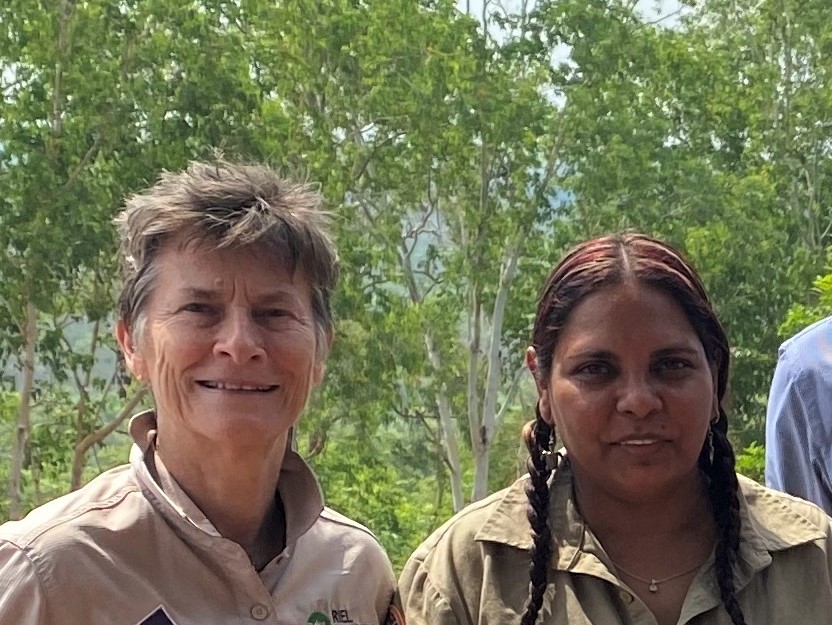
Lynette Kenyon from Pudakul (R), with Penny Wurm (L). Credit: Charles Darwin University
Who’s involved in the project?
The team the CRC has assembled for this project has the collective expertise required to build on previous CDU studies that demonstrated significant potential for establishing a Northern Australian native rice-growing system.
Charles Darwin University (CDU) researchers will lead the project, with substantial support from the Northern Territory Department of Primary Industry and Resources (NTDPIR), and input from tropical-crop experts at Queensland University of Technology (QUT) and industry participants Pudakul Aboriginal Cultural Tours, Olive Vale Pastoral Pty Ltd and Myera Group.
Myera is an indigenous enterprise that works extensively with members of the 350,000-strong Cree tribe – one of North America’s largest groups of First Nations peoples – across Manitoba province in Central Canada. The company has successfully developed advanced cultivation techniques for Canadian native rice and supplies mainstream and niche nutrition products to North America markets. The involvement of Myera Group adds a ‘first-nations collaboration’ dimension to the project, with the potential to forge Indigenous bilateral trade partnerships. Myera is also interested in value additions to native rice.
NT DPIR has been conducting rice trials in the NT and has a research agronomist with more than 25 years of rice-research experience in the Philippines. The Department is making a substantial commitment in facilities and staff.
The university partners have been undertaking research on Australian native rice for more than a quarter century; this includes research into the ecology of native Australian rice, cooking trials and market surveys of tourists and restaurants with Pudakul.
The project’s leader and manager is CDU’s Dr Sean Bellairs. Sub-projects will be led by Dr Penny Wurm (CDU), Prof. Sagadevan Mundree (QUT) and Dr Constancio (Tony) Asis (NT DPIR).
Both the lead universities and the project team are committed to collaborative, co-led project management.
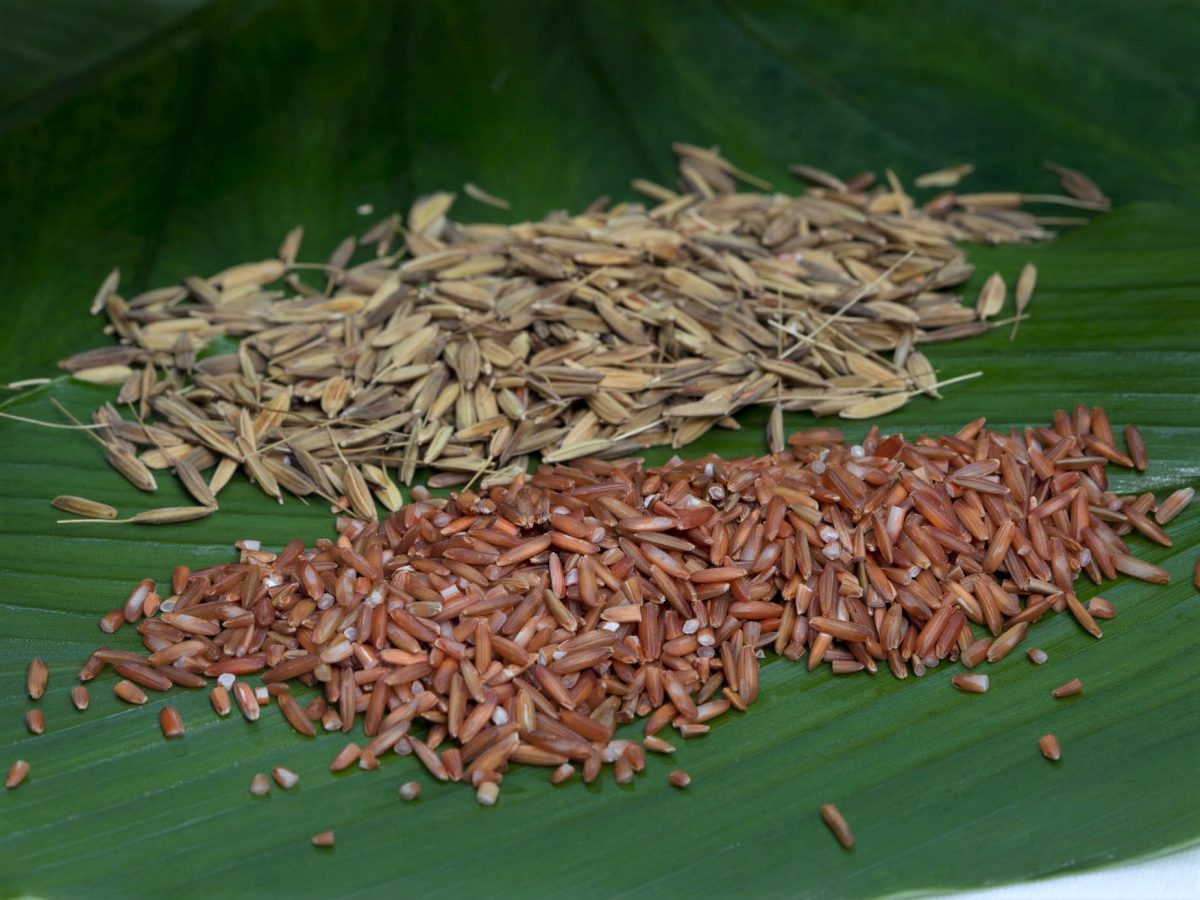
Dried grains of Australian native wild rice, which grows on Top End floodplains and is a staple grain in Indigenous bush tucker’. Credit: Jason Wilkes, Charles Darwin University
What does the research entail?
Researchers will collect samples of wild-grown populations of Australian native rices, Oryza meridionalis, O. rufipogon and O. australiensis, from wetlands in the Northern Territory and Queensland, for use in cultivation trials.
Under controlled conditions at NT Government research stations, DPIR plant scientists will explore the agronomy of these samples, developing and validating different approaches to cultivating Australian native rice. Meanwhile, native rice cultivation trials will be scaled up under the supervision of CRC-partner Indigenous enterprises in the NT and Queensland. New milling techniques will also be developed to suit native Australian rice.
Samples of different species of Australian native wild rice will be analysed, and comparisons will be made between their nutritional values and those of Canadian wild rice species.
Learnings from Canada’s indigenous-rice industry will be applied to the commercialisation of Australian native rice species as gourmet ‘health’ foods and inputs into high-value nutritional supplements.
CRC partners Pudakul Aboriginal Cultural Tours and Olive Vale Pastoral Pty Ltd will play key roles in these endeavours, demonstrating solid support for the project among Australian Indigenous enterprises and communities.
The $1,262,000 project, which officially commenced on 1 April 2020, will run until the end of March 2024.


